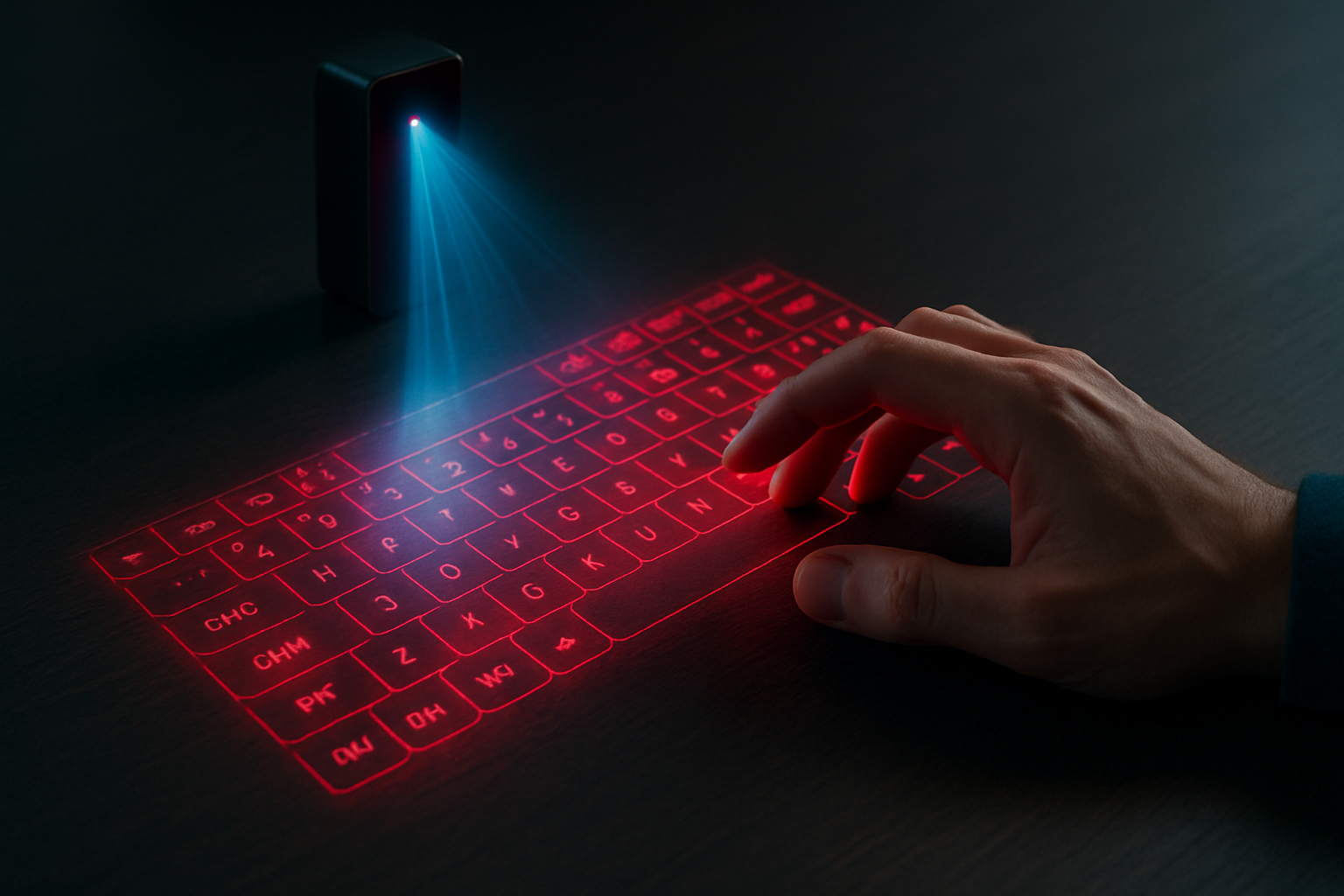Holographic Keyboards: Typing on Thin Air
In a world where technology continues to blur the lines between science fiction and reality, holographic keyboards are emerging as a captivating interface that could revolutionize how we interact with our devices. These futuristic input methods project a virtual keyboard onto any flat surface, allowing users to type without physical keys. As we delve into this cutting-edge technology, we'll explore its potential to reshape our digital interactions and the challenges it faces in becoming a mainstream input device.

How Holographic Keyboards Work
At the heart of holographic keyboard technology lies a clever combination of optics and sensors. A small projector emits a laser-generated image of a keyboard onto a flat surface. Infrared sensors then create an invisible plane just above this projected image. When a user’s fingers break this plane, the sensors detect the movement and translate it into keystrokes. Some advanced models even incorporate haptic feedback, using ultrasound waves to create the sensation of pressing physical keys.
The Advantages of Typing on Air
Holographic keyboards offer several potential benefits over traditional input methods. Their portability is unmatched – when not in use, they disappear entirely, taking up no physical space. This makes them ideal for mobile devices or situations where desk space is at a premium. Additionally, they’re inherently waterproof and dustproof, as there are no physical components to damage. The ability to customize keyboard layouts and sizes on the fly also presents exciting possibilities for accessibility and ergonomics.
Current Market and Future Prospects
While holographic keyboards are not yet ubiquitous, several companies are actively developing and refining the technology. Celluon, a South Korean tech firm, has been at the forefront with its line of laser projection keyboards. These devices, which can connect to smartphones and tablets via Bluetooth, retail for around $100 to $200. As the technology improves and production scales up, prices are expected to decrease, potentially making holographic keyboards more accessible to the average consumer.
Challenges and Limitations
Despite their futuristic appeal, holographic keyboards face significant hurdles in achieving widespread adoption. The lack of tactile feedback can make typing less accurate and slower for many users, especially touch typists accustomed to physical keys. Environmental factors such as ambient light and surface texture can also affect performance. Additionally, the power requirements for projection and sensing technologies can be a drain on mobile device batteries.
The Road Ahead: Innovations and Improvements
Researchers and developers are actively working to address these challenges. Advancements in haptic feedback technology, such as mid-air tactile sensations created by focused ultrasound waves, could significantly improve the typing experience. Machine learning algorithms are being employed to enhance accuracy by predicting and correcting user input in real-time. Some prototypes are even exploring the use of eye-tracking technology to complement finger detection, potentially increasing typing speed and accuracy.
Integration with Emerging Technologies
The potential of holographic keyboards extends beyond simple text input. As augmented reality (AR) and virtual reality (VR) technologies continue to evolve, holographic interfaces could become a crucial component of these immersive environments. Imagine typing on a virtual keyboard floating in mid-air during a VR meeting or using holographic controls to interact with AR objects in your living room. These possibilities hint at a future where our interactions with digital content become increasingly intuitive and seamless.
The Impact on Workplace and Personal Computing
If holographic keyboards overcome their current limitations, they could significantly impact how we work and interact with our devices. For remote workers and digital nomads, the ability to have a full-sized keyboard without carrying extra hardware could be a game-changer. In office environments, desk spaces could become more flexible and adaptable, with keyboards appearing only when needed. Personal computing could see a shift towards more minimalist setups, with holographic interfaces replacing multiple physical input devices.
As holographic keyboard technology continues to evolve, it represents more than just a novel way to type – it’s a glimpse into a future where the boundaries between physical and digital interfaces become increasingly blurred. While challenges remain, the potential benefits and the sheer coolness factor ensure that this technology will continue to captivate both developers and users alike. Whether holographic keyboards will ultimately replace their physical counterparts remains to be seen, but they undoubtedly offer an exciting vision of our technological future.





